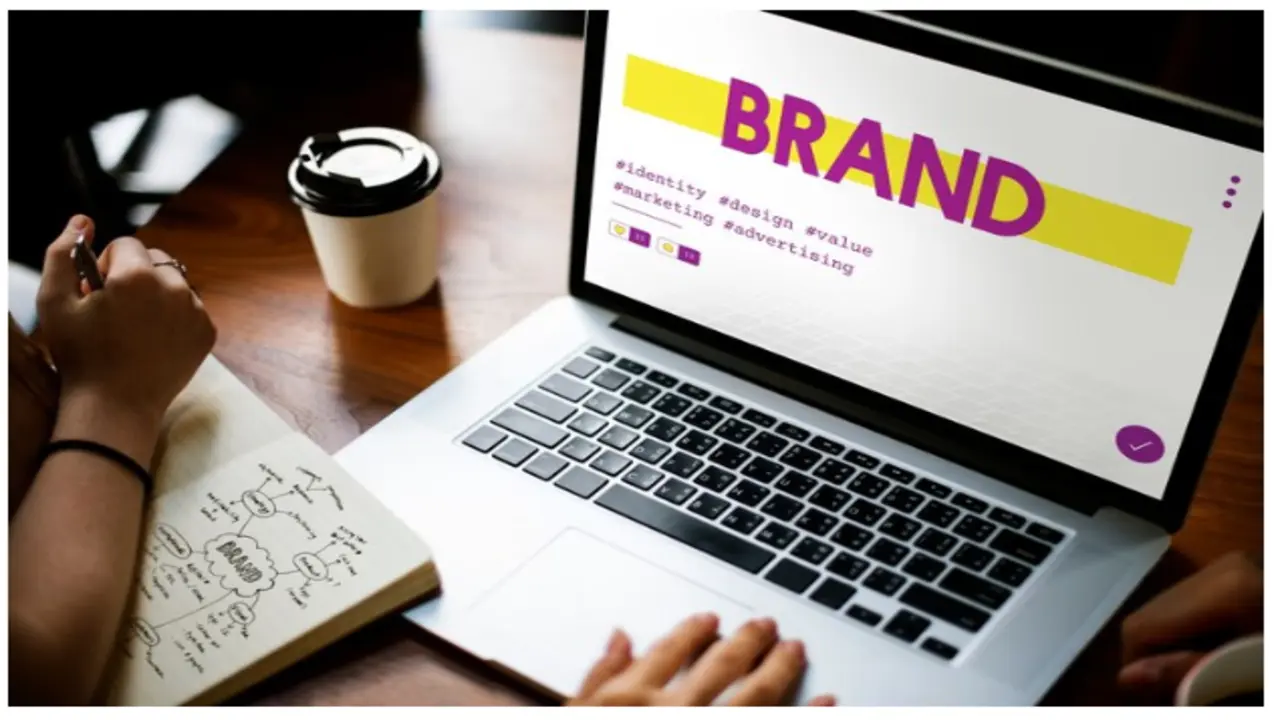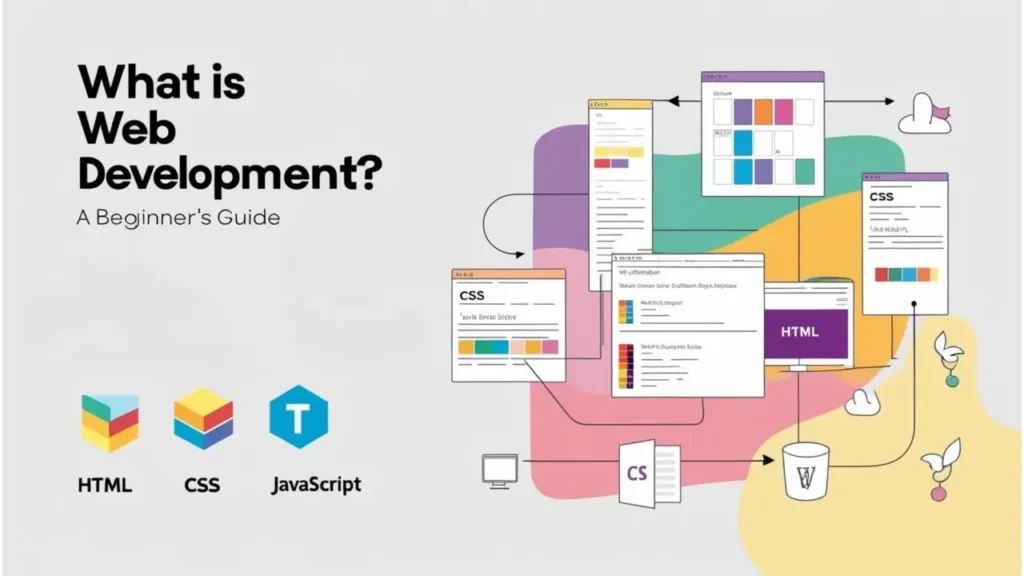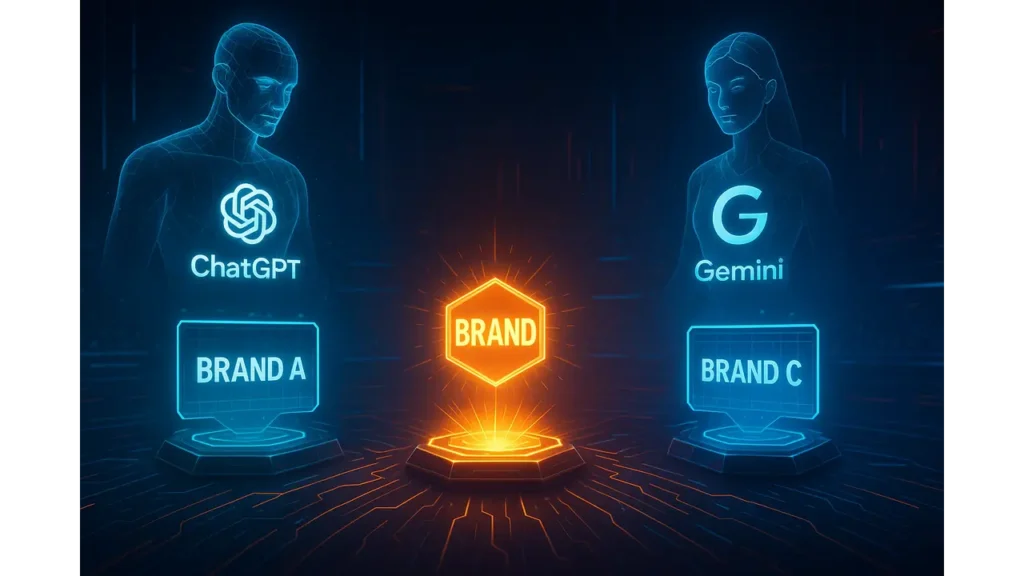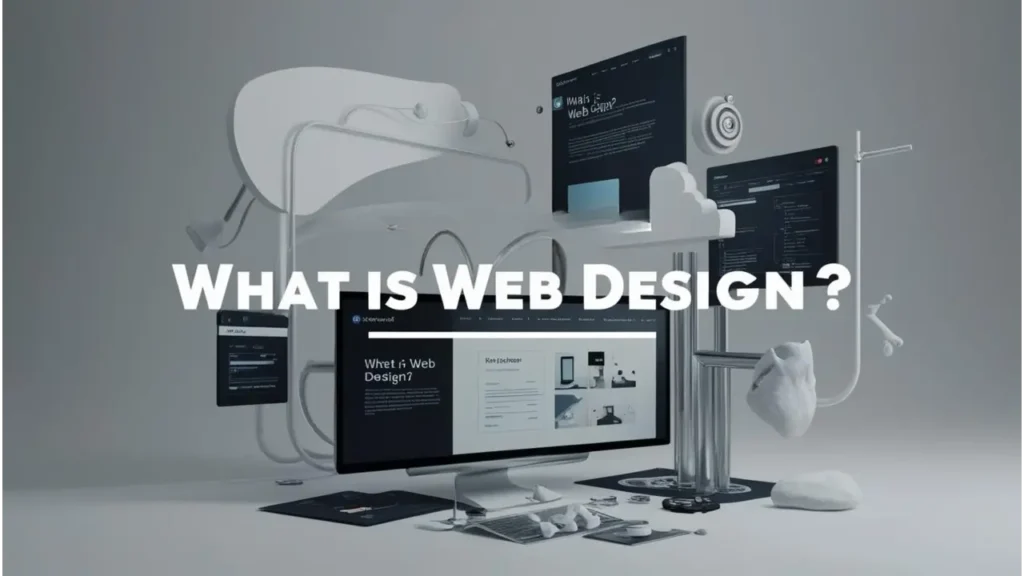Creating a memorable and cohesive brand identity is essential for any business aiming to thrive in today’s competitive market. Effective branding communicates your business’s essence, resonates with your audience, and sets you apart from competitors. Whether you’re a business owner, designer, or marketer, leveraging the right tools and resources can simplify and elevate your branding process.
This comprehensive guide explores the best graphic design tools, essential branding templates, beginner-friendly tutorials, and the value of professional branding services. Dive in to discover how to craft a compelling brand identity.
Key Takeaways
- Discover top graphic design tools like Canva, Adobe Illustrator, and Figma for professional branding.
- Access curated branding templates and resources to simplify your design process.
- Explore beginner-friendly tutorials to understand branding basics and design fundamentals.
- Learn the advantages of professional branding services for a more strategic approach.
- Discover WODO’s tailored branding services to enhance your brand identity.
Table of Contents
Best Graphic Design Tools for Branding
Selecting the right graphic design tools is a critical step in creating a cohesive and impactful brand identity. These tools enable you to craft logos, social media graphics, presentations, and other branding elements that resonate with your target audience. Below, we explore some of the top tools available for branding, highlighting their unique features, benefits, and how they cater to different branding needs.
Why Investing in the Right Tools Matters
- Time Efficiency: The right tools simplify complex design tasks, saving you valuable time.
- Professional Quality: Advanced features ensure your designs are polished and aligned with industry standards.
- Versatility: Branding tools help you create diverse assets like logos, social media posts, and print materials.
- Scalability: Tools that cater to beginners and professionals ensure your capabilities grow with your needs.
Top Graphic Design Tools
1. Canva
Features: Canva offers a vast library of templates, fonts, and design elements, making it a versatile choice for creating logos, social media posts, infographics, and presentations. The drag-and-drop interface is intuitive, requiring no prior design experience.
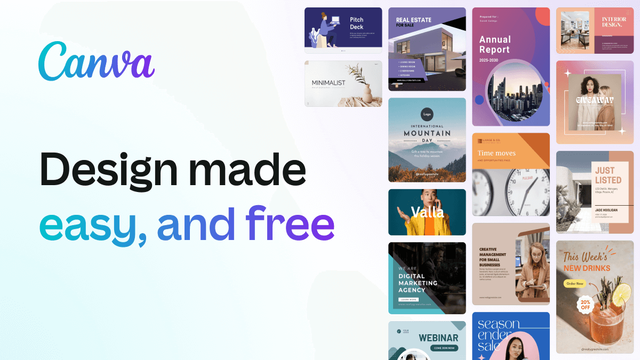
Best For: Beginners, small businesses, and marketers.
Unique Perks:
- Pre-designed branding kits to maintain consistency.
- A free version with robust features, plus a Pro version for advanced capabilities.
- Cloud-based functionality for access on any device.
Why It’s Great for Branding: Canva’s ease of use and extensive resources make it perfect for entrepreneurs and small teams looking to establish their brand quickly and effectively.
2. Adobe Illustrator
Features: Known for its precision and versatility, Adobe Illustrator is the gold standard for vector-based design. It excels at creating scalable graphics such as logos, typography, and illustrations.
Best For: Professional designers and businesses with advanced design needs.
Unique Perks:
- Precision tools for detailed designs.
- Integration with other Adobe Creative Cloud apps like Photoshop and InDesign.
- Infinite scalability for creating designs that maintain quality at any size.
Why It’s Great for Branding: Illustrator’s professional-grade tools make it the go-to choice for creating logos and other high-quality brand assets that stand the test of time.
3. Figma
• Features: Figma is a cloud-based design platform that focuses on team collaboration. It’s particularly popular among UI/UX designers for creating web and app interfaces.
• Best For: Collaborative teams and digital-first brands.
• Unique Perks:
- • Real-time collaboration, allowing teams to work on the same design simultaneously.
- • Cross-platform compatibility (works on both Mac and Windows).
- • Plugins for added functionality, such as prototyping and design automation.
• Why It’s Great for Branding: Figma is ideal for teams working on branding projects that require seamless communication and iterative design processes.
4. Affinity Designer
Features: A professional-grade graphic design tool, Affinity Designer is a cost-effective alternative to Adobe Illustrator. It offers both vector and raster design capabilities.
Best For: Designers and businesses seeking budget-friendly yet powerful tools.
Unique Perks:
- Affordable one-time payment model (no subscription required).
- Compatibility with Adobe file formats for easy collaboration.
- Smooth workflow for creating detailed branding elements.
Why It’s Great for Branding: Its affordability and range of features make Affinity Designer a great choice for small businesses and freelancers.
5. Sketch
Features: Sketch is tailored for creating clean, responsive designs for web and mobile applications. Its focus on UI/UX design makes it a favorite among digital branding teams.
Best For: Web designers and app developers.
Unique Perks:
- Lightweight, fast, and optimized for Mac users.
- Extensive plugin ecosystem for extended functionality.
- Version control and collaboration options.
Why It’s Great for Branding: Digital-first brands that prioritize user interfaces will find Sketch invaluable for creating seamless online experiences.
Key Features to Look For in Branding Tools
When selecting a tool for your branding needs, focus on the following:
- Ease of Use: For non-designers, a tool with an intuitive interface is essential.
- Template Library: Access to pre-designed templates speeds up the creation process.
- Collaboration Features: If you work in a team, choose tools that support real-time collaboration and feedback.
- Scalability: Opt for tools that cater to both beginners and professionals, ensuring they grow with your brand.
Must-Have Branding Templates and Resources
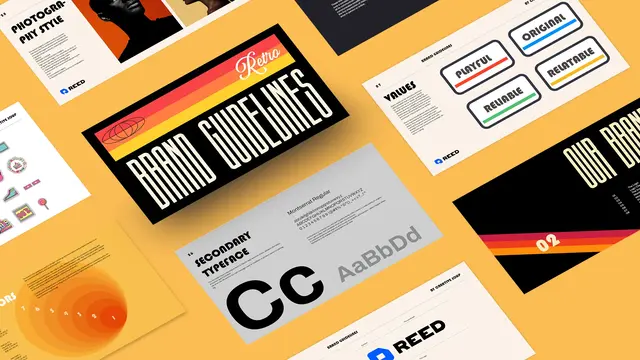
Branding templates are a cornerstone of efficient and consistent design. Whether you’re a solopreneur or part of a marketing team, these ready-to-use resources allow you to create professional designs quickly, without needing advanced design skills.
Why Templates Are Essential for Branding
- Time-Saving: Templates provide a starting point, reducing the time spent on layout and design.
- Consistency: Pre-designed assets ensure uniformity across all branding materials, from social media posts to business cards.
- Accessibility: Templates empower non-designers to create high-quality visuals without needing specialized skills.
Essential Template Categories
1. Logo Templates
A logo is the face of your brand. Templates in this category help you design a logo that communicates your brand’s values and identity. Many tools, like Canva and Adobe Spark, offer customizable logo templates to suit various industries.

2. Social Media Kits
Social media graphics play a critical role in building brand awareness. Pre-made templates for posts, stories, and banners ensure your brand maintains a cohesive look across platforms like Instagram, Facebook, and LinkedIn.
3. Business Card and Stationery Templates
Your business card is often your first impression. Professionally designed templates for business cards, letterheads, and envelopes add a polished touch to your offline branding efforts.
4. Presentation Decks
Branded presentation templates make a significant impact during pitches, webinars, and meetings. These templates combine professional aesthetics with functional layouts to elevate your storytelling.
Where to Access High-Quality Templates
- Offers premium templates for almost every branding need, from logos to presentations.
- Subscription-based model with unlimited downloads.
2. Canva
- Free and paid options with an intuitive drag-and-drop interface.
- Features a vast library of templates for various industries and purposes.
3. Creative Market
- A marketplace for unique, high-quality templates created by professional designers.
- Pay-per-template model for those who prefer one-time purchases.
4. Free Resources
- Platforms like Dribbble and Behance showcase free templates and design inspiration shared by designers worldwide.
Tips for Customizing Templates
Customizing templates is key to making them uniquely yours:
- Color Palette: Use your brand colors to align the design with your identity.
- Typography: Replace default fonts with your brand fonts for a cohesive look.
- Logo Integration: Add your logo to all templates to reinforce brand recognition.
- Images and Graphics: Incorporate custom visuals that resonate with your audience.
By customizing these elements, you ensure the template not only saves time but also stays authentic to your brand.
With these tools and templates, even beginners can confidently embark on their branding journey, creating professional, cohesive designs that reflect their business’s unique identity.
Tutorials for Beginners: Design and Branding
Branding, especially for beginners, can feel like navigating uncharted waters. Learning how to combine design principles with branding strategies is crucial for creating assets that communicate your business’s identity effectively. Tutorials are invaluable for building a strong foundation, mastering design tools, and understanding key branding concepts.
This section delves into how tutorials can guide you in crafting professional branding assets and aligning your designs with your brand’s story.
Why Tutorials Are Essential for Beginners
Tutorials act as your personal guide, helping you:
- Gain Confidence in Using Tools: Complex software like Adobe Illustrator or Figma can feel intimidating at first. Tutorials simplify these tools by breaking down their features into manageable steps.
- Develop a Strategic Mindset: Branding is more than just aesthetics. Tutorials teach you how to align design elements (like colors and fonts) with your business goals.
- Save Costs: Learning how to design yourself reduces the need to outsource, especially for simple tasks like creating social media posts or presentations.
- Foster Creativity: Tutorials inspire you to explore new ideas and techniques, boosting your confidence to experiment with different styles.
Tool-Specific Tutorials: A Detailed Breakdown
1. Canva Tutorials
Canva is a beginner-friendly tool, but diving deeper into its features allows you to unlock its full potential.
What You’ll Learn:
- Designing from scratch using Canva’s drag-and-drop interface.
- Customizing pre-made templates for logos, business cards, and social media posts.
- Creating branded kits with your logo, colors, and fonts for consistency across designs.
- Beginner Tip: Start by exploring Canva’s free templates and gradually move to advanced features like animation and video editing.
Best Resources:
- Canva’s Learn Hub: Offers step-by-step tutorials and design tips.
- YouTube Creators: Channels like Kreative Kiwi and Design with Canva focus on branding basics.
- Workshops and Webinars: Canva frequently hosts free live events for users.
2. Adobe Illustrator Tutorials
Adobe Illustrator’s professional capabilities make it the preferred choice for designers, but it’s also accessible for beginners who are ready to learn.
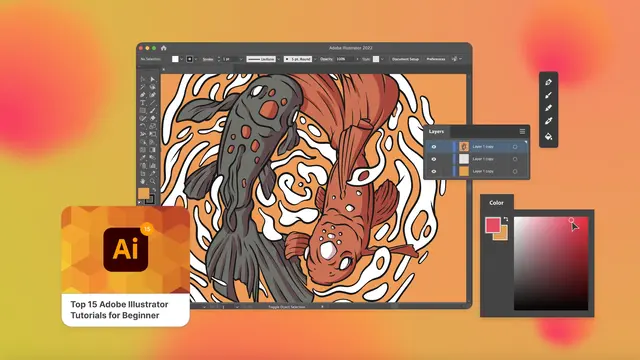
What You’ll Learn:
- How to create scalable vector graphics like logos and icons.
- Understanding Illustrator’s tools, such as the pen tool, layers, and gradient mesh.
- Designing typography-based logos with advanced text effects.
Advanced Skills for Branding:
- Exporting assets in different formats for digital and print use.
- Mastering artboards for creating multiple designs in one file.
• Best Resources:
- Adobe’s Creative Cloud Tutorials: Comprehensive guides on Illustrator’s features.
- Skillshare Courses: Beginner-friendly classes on Illustrator basics.
- YouTube Channels: Satori Graphics and DesignCourse offer practical tips.
3. Figma Tutorials
Figma stands out for its team collaboration and UI/UX design capabilities, making it ideal for brands focusing on digital experiences.
What You’ll Learn:
- How to design user-friendly interfaces for websites and apps.
- Collaborating in real-time with your team on branding projects.
- Using plugins for branding assets like icon libraries and mockups.
Advanced Features:
- Prototyping tools to create interactive demos for stakeholders.
- Component libraries for maintaining design consistency across projects.
Best Resources:
- Figma’s Official Resources: Offers beginner guides and advanced case studies.
- Community Forums: Learn from other designers by exploring Figma’s active community.
- YouTube Channels: Creators like Femke and Learn UI/UX share actionable tutorials.
4. Procreate Tutorials
For brands that rely on hand-drawn elements, Procreate is a powerful tool for creating unique illustrations and custom assets.
What You’ll Learn:
- Creating detailed hand-drawn logos and icons.
- Using layers to organize complex illustrations.
- Exporting high-quality images for web and print.
Best Resources:
- Procreate’s Official Tutorials: Perfect for beginners to explore the app’s basics.
- YouTube Creators: Channels like Art with Flo and Bardot Brush are excellent starting points.
- Brush Packs: Many tutorials include downloadable brushes to enhance your designs.
Core Branding Concepts Explained
1. Building a Brand Identity
- Define your brand’s mission, vision, and values.
- Develop a clear understanding of your target audience to create designs that resonate.
- Align your brand identity with consistent visual elements (logo, colors, fonts, and tone).
2. Typography Pairing
Why It Matters: Typography impacts readability and mood. Poorly paired fonts can confuse or alienate your audience.
What to Learn:
- Combining serif and sans-serif fonts for contrast.
- Using decorative or script fonts sparingly for emphasis.
3. Color Theory

Why It Matters: Colors evoke emotions and shape perceptions.
What to Learn:
- The psychology of colors (e.g., red for energy, blue for trust).
- Building harmonious palettes using tools like Adobe Color.
4. Layout and Composition
Why It Matters: A well-structured design directs attention and improves readability.
What to Learn:
- Principles like alignment, balance, and visual hierarchy.
- Creating clear focal points to guide the viewer’s eye.
Benefits of Professional Branding Services
Professional branding services go beyond DIY efforts, providing the expertise, creativity, and strategy required to develop a cohesive and impactful brand. While tools and tutorials are valuable, professional services offer a deeper level of insight and execution.
Why Consider Professional Branding Services?
1. Lack of Time and Resources
For business owners juggling multiple responsibilities, dedicating time to branding can be challenging. Professionals handle everything from design to strategy, freeing up your time for other priorities.
2. Need for Unique, Tailored Branding
DIY tools often rely on templates, which can lead to generic designs. Professionals craft custom branding solutions that reflect your unique business identity.
3. A Holistic Approach
Professional services include not just visuals but also:
- Strategic Positioning: Understanding your market and competitors to position your brand effectively.
- Messaging: Developing a brand voice that resonates with your audience.
Key Benefits of Professional Branding Services
1. Expertise
- Professionals bring years of experience, ensuring that your brand reflects current trends and best practices.
- They understand how to align your brand with industry standards and customer expectations.
2. Customization
- Tailored solutions reflect your brand’s unique personality.
- Professionals can integrate complex elements like interactive designs or 3D visuals.
3. Consistency Across Platforms
- Ensures a unified look across websites, social media, print materials, and more.
- Consistency builds trust and recognition among your audience.
4. High-Quality Output
- Professional designs have a polished, sophisticated appearance that stands out.
- Agencies use advanced tools and techniques that go beyond what DIY platforms offer.
Services Offered by Professionals
1. Logo Design:
- Craft logos that are timeless, versatile, and memorable.
2. Brand Guidelines:
- Define rules for colors, fonts, imagery, and tone to maintain consistency.
3. Marketing Collateral:
- From business cards to brochures, professionals ensure every touchpoint reflects your brand identity.
4. Website Design:
- Create user-friendly websites that align with your brand’s visual identity and messaging.
5. Market Analysis:
- Develop strategies based on competitor research and audience behavior.
When to Seek Professional Branding Help
- Rebranding: When your business evolves, a professional can help redefine your brand identity.
- Competitive Markets: In crowded industries, professionals ensure your brand stands out.
- Scaling: Growing businesses need a cohesive identity to attract larger audiences.
How Professional Branding Increases ROI
- Improved Recognition: A cohesive, high-quality brand increases customer trust and loyalty.
- Enhanced Marketing: Strong branding simplifies marketing efforts and boosts campaign effectiveness.
- Higher Conversion Rates: A professional identity is more likely to convert visitors into customers.
Investing in professional branding ensures your business not only looks great but also performs effectively in today’s competitive landscape. By combining your DIY efforts with professional expertise, you can achieve a brand that resonates, connects, and endures.
Why Choose WODO for Branding
What Makes Us Unique
WODO offers end-to-end branding solutions tailored to your business needs. We combine strategic insights with creative expertise to deliver impactful results.
Our Services
- Comprehensive branding packages.
- Customized designs tailored to your goals.
- Strategic consultations to enhance your brand’s positioning.
Success Stories: How We’ve Helped Businesses Transform
- E-Commerce Business: We revitalized their brand identity with a modern logo, engaging social media graphics, and a mobile-friendly website. The result? A 45% increase in customer retention and a 30% growth in online sales.
- Local Service Provider: By creating a cohesive brand strategy, we helped them build trust with their community, resulting in a 60% increase in referrals.
- Tech Startup: Our branding efforts positioned them as an innovative player in their industry, helping them secure key partnerships and funding.
Why Wait? Let’s Build Your Brand Today!
With WODO, you’re not just investing in design—you’re investing in a comprehensive branding strategy that empowers your business to thrive. Let us help you tell your story, connect with your audience, and stand out in a competitive market.
Get in touch with us today and take the first step toward building a brand that leaves a lasting impression!
FAQs: Design Tools for Branding
1. What are the best tools for beginners starting with branding?
Tools like Canva and Figma are great for beginners. Canva offers an intuitive drag-and-drop interface with pre-made templates, while Figma excels in collaborative projects, particularly for digital-first branding.
2. Can I create professional branding without expensive software?
Yes, you can create professional branding using free or budget-friendly tools like Canva (free version available), Affinity Designer (affordable one-time payment), or resources from Behance and Dribbble for inspiration and templates.
3. What is the most important branding template to start with?
Start with a logo template, as your logo is the cornerstone of your brand identity. Afterward, focus on social media kits and business card templates to ensure consistent branding across platforms and touchpoints.
4. Where can I find free tutorials for branding and design?
YouTube: Channels like The Futur, Envato Tuts+, and Satori Graphics offer excellent free tutorials.
Blogs: Platforms like HubSpot and Canva Learn Hub provide actionable branding tips.
Pro Tool Resources: Most tools, like Canva, Figma, and Adobe Illustrator, offer free tutorials on their official websites.
5. How can I ensure my branding is cohesive across all platforms?
Use a brand style guide that defines your logo usage, color palette, typography, and tone of voice. Tools like Canva allow you to create and save branding kits for consistent designs.
6. Do I need professional branding services if I’m already using DIY tools?
If you’re facing challenges like inconsistent branding, lack of unique designs, or insufficient time to focus on branding, professional services can provide tailored and comprehensive solutions that elevate your brand.
Conclusion
Branding is the cornerstone of a successful business. By leveraging the right tools, templates, and tutorials, you can create a compelling and cohesive brand identity. For businesses seeking a more strategic and professional approach, branding services like those offered by WODO can ensure your brand stands out in a crowded market. Start your branding journey today and watch your business grow!
Need help? Reach out to WODO for tailored branding solutions.

